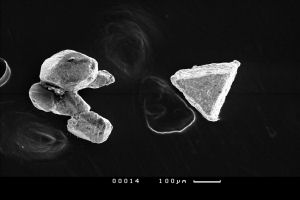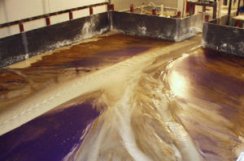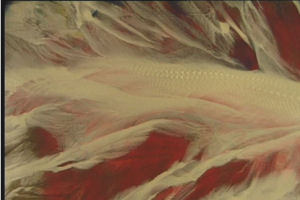
Research Themes & Methods
Key Areas of Research
Gold grain mineralogy and implications for placer-lode gold relationships (Leader: Dr Rob Chapman) Placer gold particles are overwhelmingly hyogene in origin, and their mineralogical and chemical characteristics are those inherited from their hypogene source. The gold alloy composition provides information on the chemical environment of gold precipitation, as does the associated vein mineralogy which is usually preserved as mineral inclusions within placer gold particles. Studies of populations of gold particles from either placer or lode sources permits synthesis of the alloy and inclusion data to generate a ‘microchemical; signature’ of the sample. This signature may be used in several ways:
Placer formation and evolution (Leader: Rob Lowther) Although there is a great deal known about heavy mineral concentration processes on a small scale (10’s m), there is very little known about placer formation and evolution on a larger scale (10’s Km). It is this larger scale understanding that is essential when prospecting for new placer deposits. The sedimentological study of existing placer deposits allows for these deposits physically modelled, allowing for their formation processes to be observed. This modelling will allow for an increased understanding, allowing for advances in exploration techniques. An increased knowledge of placer formation and evolution will:
Indicator minerals and mineral exploration (Leader: Dr Norman Moles) Heavy mineral concentrates (HMC) obtained from sediments by hydraulic and gravitational separation methods have become widely used in mineral exploration for many commodities in addition to diamonds. Concealed bedrock geology may be inferred from abundances of minerals indicative of particular lithological associations (e.g. chromite with mafic/ultramafic rocks). The mineralogy of HMC samples can help constrain the style of mineralization from which associated placer gold is derived, although caution is necessary as mechanically resistant indicator minerals transported from distant sources may co-exist with gold sourced directly from local bedrock. Techniques range from simple bulk analysis by XRD and XRF to more advanced methods including mineral liberation analysis (MLA) and quantitative evaluation of materials by scanning electron microscopy (QEMSCAN). Minor and trace element analyses of specific indicator minerals (such as Nb and Ta in cassiterite) provides valuable information on styles of bedrock mineralization within a study area. MethodsElectron microscopy
  Sedimentary architecture and evolution studies
 
| ||
